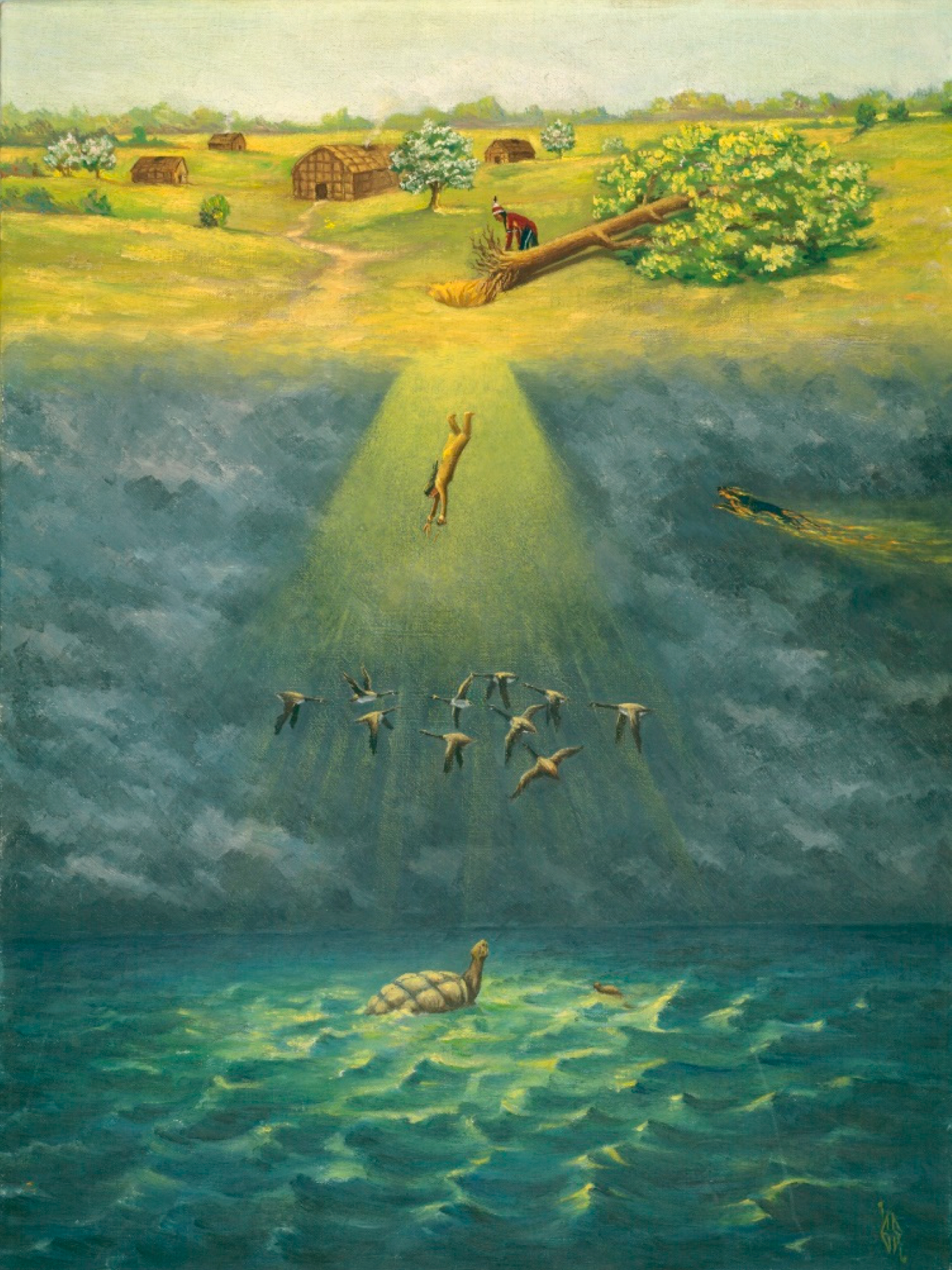In the Beginning: Native American Creation and Origin Stories Across Cultures

Creation and origin stories are at the heart of every culture’s understanding of the world, and for Native American nations, these sacred narratives are deeply tied to identity, environment, spirituality, and ancestral memory. Passed down orally for generations, these stories explain how the world began, how humans were created, and how each tribe came to inhabit its ancestral lands. Each Native American nation has its own unique version, shaped by geography, worldview, and cultural traditions, yet many share common themes that highlight the deep spiritual connection between humans, animals, the Earth, and the cosmos.
The Nature of Native American Creation Stories
Unlike Western religious creation myths, which often describe a single moment of divine creation, many Native American origin stories reflect a cyclical and interconnected understanding of time, nature, and spirit. These stories often feature animals, natural elements, supernatural beings, and ancestors working together or in conflict to shape the world.
Because there are over 500 federally recognized tribes in the United States alone, no single creation myth defines Native American spirituality. However, several common motifs and representative stories offer a glimpse into this rich and diverse oral tradition.
Common Themes in Native American Origin Myths
- Earth Diver Motif:
A common theme among many Eastern Woodland and Great Plains tribes. In these stories, the Earth is created from a small amount of mud brought from the depths of the primordial waters by an animal—often a turtle, beaver, or muskrat. - Emergence from the Earth or Underworld:
Found in Pueblo and Southwestern stories, where ancestors emerge from beneath the Earth into the current world, usually passing through multiple worlds or stages of being. - Sky World and Cosmic Descent:
Some Northeastern and Iroquoian tribes tell stories of a Sky Woman who falls or descends from the heavens and gives birth to the Earth’s inhabitants. - Animal Kinship and Co-Creation:
Animals often play crucial roles as helpers, creators, or teachers. Humans are seen not as superior, but as part of a larger ecological and spiritual network. - Sacred Geography:
Stories are deeply tied to specific landscapes—mountains, rivers, plains—reinforcing the tribe’s relationship to their traditional lands.

Notable Creation Stories Across Tribes
1. Iroquois (Haudenosaunee) – The Sky Woman
According to the Iroquois, the world began in a Sky World where Sky Woman fell through a hole in the sky and landed in the watery world below. Animals tried to find earth for her to land on. The muskrat succeeded in bringing up a small amount of soil, which was placed on the back of a turtle—this became Turtle Island, or North America. Sky Woman gave birth to twin sons—one good, one evil—whose struggle shaped the world.
2. Navajo (Diné) – Emergence from the Lower Worlds
The Navajo creation myth describes how the first beings emerged from several underworlds, each representing a stage of evolution and spiritual refinement. In the current Fourth World, they settled after escaping chaos and monsters from the previous worlds. The myth also introduces First Man and First Woman, who helped establish harmony and balance in the universe.
3. Lakota – The Birth from the Wind Cave
The Lakota people believe that their ancestors emerged from Wind Cave in the Black Hills of South Dakota, led by a sacred being named Iktomi or Tokahe. They were guided into the upper world by the Creator and instructed to live in harmony with the land, but forgetting these instructions led to hardship.
4. Hopi – The Four Worlds
Similar to the Navajo, the Hopi believe that humans emerged from three previous worlds into the Fourth World, aided by spiritual guides such as Spider Woman. They were given sacred knowledge and instructed to live in balance with the land. The migration across the Southwest left spiritual markers in the form of petroglyphs and sacred sites.
5. Cherokee – The Creation of the Earth
In the Cherokee myth, animals lived in the sky realm. One day, they sent a water beetle to find land. The beetle dove into the water and brought up mud, which spread to become the Earth. The Great Buzzard flew over the soft earth, and where his wings struck the ground, they formed mountains and valleys of the Southeast.
Cultural Significance of Creation Stories
Creation stories are not merely myths or entertainment—they serve as spiritual blueprints, explaining the origin of sacred laws, customs, ceremonies, and the tribe’s place in the universe. They are taught to children to preserve cultural identity and to maintain the oral tradition that predates written history. These stories also emphasize moral values, such as respect for nature, balance, and the importance of community.
Challenges and Preservation
With colonization, many Native oral traditions were suppressed or dismissed as folklore. Missionary efforts, forced assimilation, and residential schools contributed to the loss of language and storytelling. However, in recent decades, many Native communities have revitalized their storytelling traditions, recording oral histories and teaching creation stories in schools and cultural centers to preserve their heritage.
Conclusion: A Living Tradition
Native American creation and origin stories remain living, sacred traditions that continue to guide cultural, spiritual, and environmental practices. More than historical curiosities, they are essential expressions of identity, reflecting each tribe’s relationship to the land, the cosmos, and each other. In honoring these stories, we recognize the depth, diversity, and enduring wisdom of Indigenous worldviews.
Summary:
Native American creation and origin stories offer powerful insights into the values, spiritual beliefs, and environmental connections of Indigenous peoples across North America. From Earth Diver myths to emergence narratives, these diverse and symbolic tales explain not only how the world began but how Native communities see themselves within it. They continue to shape tribal identities, ethical systems, and sacred relationships with the land to this day.




